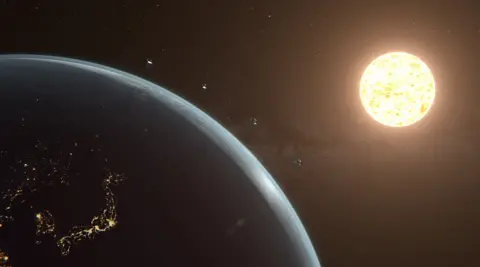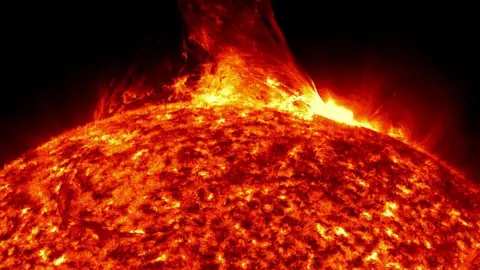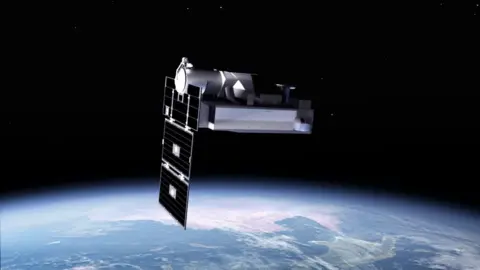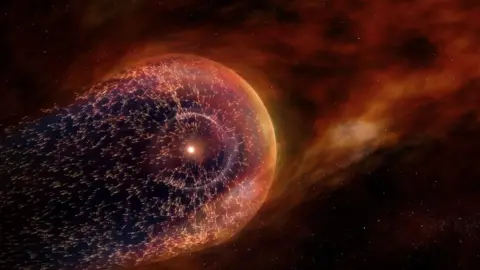UK agency develops Nasa solar satellite cameras
 NASA
NASAA "pioneering" Nasa mission using satellites partly developed by UK scientists is set to launch later this week.
The American space agency mission will observe the Sun's outer atmosphere - the corona - to learn how the mass and energy there become the solar wind.
Four suitcase-sized spacecraft will be used to build 3D maps of the corona, as part of attempts to improve space weather forecasting.
The camera systems installed on the spacecraft were developed by RAL Space, based in Harwell, Oxfordshire.
Solar wind is usually harmless, and is responsible for producing the Northern and Southern Lights displays.
However, severe solar storms can interfere with aspects of everyday life including GPS systems, power grids, and vital global communications on Earth.
 NASA
NASAThe Nasa mission aims to explore how solar wind evolves as it expands outwards from the the Sun's atmosphere into the wider solar system.
It's hoped that by capturing images of the Sun's corona and the solar wind together, scientists will be able to better understand a region of space known as the inner heliosphere.
The region is effectively a vast magnetic bubble that surrounds the Sun that is formed by the solar wind.
 NASA
NASAAs part of the operation, scientists, engineers and technicians from RAL Space have developed four specialised cameras that can "capture a new perspective of the evolving solar wind".
Once the spacecraft are in orbit, RAL Space will also be responsible for making sure the equipment on the satellites can provide accurate measurements back to Earth.
 NASA
NASADr Jackie Davies, from RAL Space, said the latest mission built on the agency's "extensive heritage in leading, and contributing to, solar and solar wind imaging instruments".
She said it was "thrilled" to be working alongside Nasa and over US based teams on the "pioneering" project.
She added that she "can't wait to see what new insights our technological and scientific input will reveal in the coming months".
Nasa's Polarimeter to Unify the Corona and Heliosphere (PUNCH) mission is set to launch in the early hours of Friday, UK time.
The four ten-and-a-half stone (67kg) satellites will orbit the Earth for the duration of the mission, which is expected to last two years.
You can follow BBC Oxfordshire on Facebook, X (Twitter), or Instagram.
